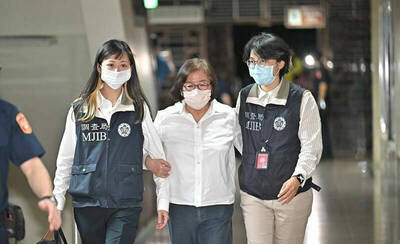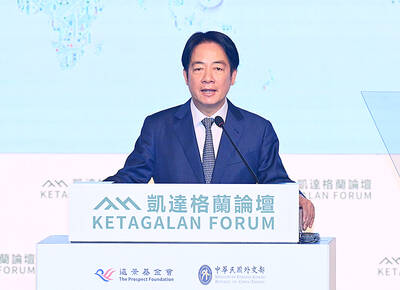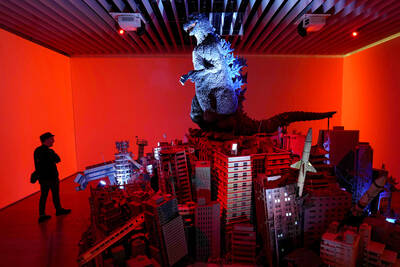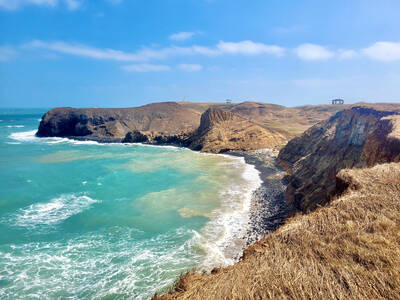VIEW THIS PAGE Jean-Marie Serundori’s eyes light up when he sees his old hulk of a friend Kabirizi.
War, displacement and bloodthirsty rebels had gotten between them.
But for the first time in years, this section of a venerated national park in the Democratic Republic of Congo (DR Congo) is rebel-free. Government wildlife rangers, like Serundori, are firmly in control — for the moment. And Kabirizi, a 227kg silverback gorilla with a head as big as an engine block, seems to be flourishing in his kingdom of leaves.
“Haa mmm,” Serundori says, emitting a special grunt-like gorilla greeting that miraculously stops Kabirizi in mid-charge. “Haa mmm.”
If the endangered mountain gorillas are any sign, things may finally be looking up in eastern DR Congo. In the past several weeks, DR Congo and its disproportionately mighty neighbor, Rwanda, have teamed up to sweep this area clear of rebels who had been at the center of a vicious proxy battle between the nations.
The enmity of DR Congo and Rwanda has been one of the most stubborn drivers of the bloodshed here, which has claimed millions of lives in the past decade. But if these two countries continue to cooperate, it could represent a significant step toward ending one of Africa’s most vexing wars.
WORKING WITH RWANDA
“This is really good news, that there’s a serious improvement in relations,” said Koen Vlassenroot, a professor at Ghent University in Belgium who specializes in eastern DR Congo. “But it’s still rather confusing.”
Vlassenroot and other DR Congo hands are warning that all the years of cross-border meddling and intrigue as thick as the jungle make it extremely difficult to tell whether the new Rwanda-DR Congo relationship is a genuine and lasting change, or simply more maneuvering.
The joint military operation has been somewhat successful, at least by eastern DR Congo’s depressingly low standards. The two former enemy armies fought side by side without massacring each other. They killed dozens of rebels, including some commanders, and exerted pressure on several hundred to leave the bush. They arrested Laurent Nkunda, the rebel leader and former general whose brutal tactics and Congo-size ambitions had threatened to plunge this entire region back into war.
But at least 100 villagers were killed, too, either in the crossfire or by fleeing rebels bent on revenge. And there may be more bloodletting to come.
Over the past several years, most of DR Congo has wearily climbed out of war. Large tracts of the country, despite all the headlines, are peaceful. But it is these very hills along the DR Congo-Rwanda border that have remained a lush green killing field, with Rwanda supporting one rebel force and DR Congo supporting another.
The ensuing violence has sucked up so many of DR Congo’s political and military resources that the so-called wild, wild east has been like an intractable weight around the entire country’s neck.
Today, the hills are quiet, which has allowed the wildlife rangers back into Virunga National Park, home to 200 of the last 700 or so mountain gorillas on the planet. Thousands of villagers around the park have trudged home from displaced persons camps, another vote of tentative confidence.
“Business is picking up,” said Bahati Banyele, who fixes radios in a little town called Kibumba, which had emptied out during last fall’s fighting.
Nobody is celebrating yet.
People here remember all too well the Sun City peace treaty reached in South Africa in 2002, which was supposed to rein in marauding militias but did not.
They recall the democratic elections in 2006, which cost more than US$500 million and raised hopes but did not end the war.
And they remember the countless ceasefires and conferences at fancy hotels that spelled more fighting even before the delegates jetted home.
KABILA’S GAMBLE
One of the biggest points of uncertainty right now is DR Congo President Joseph Kabila, who has gone out on a limb by inviting in the Rwandans, in the hope that this could break the deadlock between the countries.
Several former allies of Kabila among top lawmakers in the capital Kinshasa are now denouncing him as a traitor. They are demanding investigations.
Indeed, his precarious toehold on power could slip further if the Rwandan government, as many people here suspect, has not truly severed ties to the rebels.
The presence of Rwandan troops in eastern DR Congo makes a lot of Congolese nervous. The little country next door invaded Congo twice, in 1996 and 1998, ostensibly to secure its
own borders, though human rights groups have accused Rwandan troops of plundering Congo’s rich trove of minerals and massacring civilians. VIEW THIS PAGE

Following the shock complete failure of all the recall votes against Chinese Nationalist Party (KMT) lawmakers on July 26, pan-blue supporters and the Chinese Communist Party (CCP) were giddy with victory. A notable exception was KMT Chairman Eric Chu (朱立倫), who knew better. At a press conference on July 29, he bowed deeply in gratitude to the voters and said the recalls were “not about which party won or lost, but were a great victory for the Taiwanese voters.” The entire recall process was a disaster for both the KMT and the Democratic Progressive Party (DPP). The only bright spot for

As last month dawned, the Democratic Progressive Party (DPP) was in a good position. The recall campaigns had strong momentum, polling showed many Chinese Nationalist Party (KMT) lawmakers at risk of recall and even the KMT was bracing for losing seats while facing a tsunami of voter fraud investigations. Polling pointed to some of the recalls being a lock for victory. Though in most districts the majority was against recalling their lawmaker, among voters “definitely” planning to vote, there were double-digit margins in favor of recall in at least five districts, with three districts near or above 20 percent in

From Godzilla’s fiery atomic breath to post-apocalyptic anime and harrowing depictions of radiation sickness, the influence of the nuclear bombings of Hiroshima and Nagasaki runs deep in Japanese popular culture. In the 80 years since the World War II attacks, stories of destruction and mutation have been fused with fears around natural disasters and, more recently, the Fukushima crisis. Classic manga and anime series Astro Boy is called “Mighty Atom” in Japanese, while city-leveling explosions loom large in other titles such as Akira, Neon Genesis Evangelion and Attack on Titan. “Living through tremendous pain” and overcoming trauma is a recurrent theme in Japan’s

The great number of islands that make up the Penghu archipelago make it a fascinating place to come back and explore again and again. On your next trip to Penghu, why not get off the beaten path and explore a lesser-traveled outlying island? Jibei Island (吉貝嶼) in Baisha Township (白沙鄉) is a popular destination for its long white sand beach and water activities. However, three other permanently inhabited islands in the township put a unique spin on the traditional Penghu charm, making them great destinations for the curious tourist: Yuanbeiyu (員貝嶼), Niaoyu (鳥嶼) and Dacangyu (大倉嶼). YUANBEIYU Citou Wharf (岐頭碼頭) connects the mainland